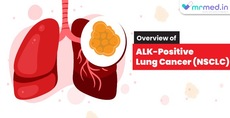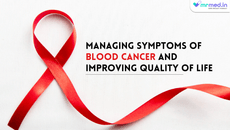Ever felt that strange heaviness in your legs after sitting for hours? That dull ache that kicks in during long travel or a full day at your desk? That “stuck” feeling is more important than you think your legs are trying to tell you something. And giving them even a little movement can make a huge difference in keeping your circulation strong and protecting you from clot-related problems.
Why Your Legs Play a Big Role in Circulation
Your legs work hard every day. They support your weight, help you stay active, and function like pumps that push blood back up toward your heart. When you move your legs regularly, the muscles contract, squeezing the veins and helping blood flow upward smoothly.
But when your legs stay still for long hours, whether you’re working, travelling, or resting, blood flow slows down. Slow-moving blood is more likely to form clots deep inside the veins, especially in the lower body. That is how a condition called Deep Vein Thrombosis can begin quietly.
When people try to understand what is Deep Vein Thrombosis, they often imagine something sudden, but it usually builds up slowly because the blood isn’t circulating well. This is why leg movement is one of the simplest and most powerful ways to protect your veins.
How Sitting Too Long Affects Your Veins
Many people don’t realise that sitting for hours is one of the biggest risk factors for clot formation. When the knees are bent for long periods, veins get compressed, and blood has a harder time travelling upward. If this continues day after day, the chances of a clot increase.
Here are situations where leg movement becomes extra important:
- Long office hours
- Long flights or road trips
- Bed rest after surgery or illness
- Working nights or extended shifts
- Studying for long stretches
A few small changes to your daily routines can help keep your legs active and your veins healthy.
Easy Leg Movements That Support Healthy Blood Flow
You don’t need a gym or a workout mat for this. Even tiny movements help your blood flow dramatically. Here are simple ideas you can do anywhere:
1. Ankle Circles
Lift your feet slightly off the ground and rotate your ankles in a circular motion. This boosts circulation in your calves and prevents blood from pooling.
2. Heel-to-Toe Pumps
Push your toes down, then lift your heels, and repeat. This mimics the action of walking and activates the calf muscle pump.
3. Mini Walk Breaks
Every hour, take a short walk, even one or two minutes is enough to get your blood moving.
4. Leg Raises While Sitting
Slowly lift your legs straight out in front of you, hold for a few seconds, and lower them. This strengthens leg muscles and improves blood circulation.
5. Stretching the Calves
A simple calf stretch helps release tension and open up circulation pathways.
These movements make a noticeable difference when practised consistently throughout the day.
Why Walking Is One of the Best Ways to Protect Your Veins
Walking is often underestimated, but it’s one of the most effective habits for reducing the risk of DVT. Each step activates your calf muscles, which act like natural pumps that help blood travel upward.
Regular walking can:
- Reduce leg swelling
- Keep veins flexible
- Improve overall circulation
- Support a healthy body weight.
- Prevent stiffness from long sitting hour.s
A 20 to 30-minute walk daily is a simple routine that brings long-term benefits to your veins and heart.
The Role of Hydration in Leg Health
Hydration is just as important as movement. When your body is dehydrated, blood becomes thicker, making it easier for clots to form. Keeping your legs moving and staying hydrated work together to keep blood thin and flowing.
Small daily habits help:
- Keep a water bottle nearby
- Sip water regularly instead of drinking large amounts at once
- Choose water, herbal tea, and coconut water.
- Reduce dehydrating beverages like excess coffee and alcohol.
Your blood becomes more fluid, your legs feel lighter, and your circulation stays stronger.
Compression Stockings and Leg Support
Compression stockings gently apply pressure to your legs, helping blood move upward more easily. They can be helpful for:
- Long flights
- People who stand or sit for long hours
- Those with a history of vein problems
If recommended by a doctor, these stockings can be an added layer of protection.
When Medical Care Is Needed to Prevent Clots
While leg movement is a strong preventive measure, certain health conditions require medical treatment to effectively manage clot risk. Some individuals may need anticoagulant medication to keep the blood from clotting too easily.
Apigat 5mg, which contains Apixaban, are commonly part of treatment plans for people at higher risk or for those recovering from a previous clot. Products are prescribed to help prevent clot formation and support safe blood flow inside the veins. These medications are effective but should always be taken exactly as a doctor instructs.
People using these treatments should also incorporate leg movement into their routine, as lifestyle and medication work best together.
Combine Movement With Everyday Wellness Habits
You don’t need big changes to protect yourself from clot risks. Here are simple habits that support stronger circulation:
- Move your legs every hour
- Stretch during work breaks.
- Drink water regularly
- Maintain a comfortable body weight.
- Avoid tight clothing for long hours.
- Sleep well to allow the body to recover.
These small habits create a long-lasting foundation for good leg health and strong circulation.
Final Takeaway
Your legs are more powerful than you realise, they’re not just for walking, but also for keeping your blood flowing safely. Giving them movement throughout the day is one of the easiest ways to protect yourself. Even small actions help your veins work better, your energy stays higher, and your body feels lighter. Every step you take today builds a healthier future for your circulation and overall well-being.




